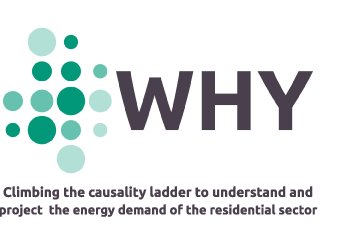Why the energy systems needs causal modeling

''In order to mitigate climate change effects, urgent action is required in all sectors of the economy to significantly reduce greenhouse gas emissions. On the supply side, Energy System Models (ESMs) have provided useful results, but on the demand side, they lack the degree of accuracy required for proper characterization of the use of energy in households.''
WHY is the next step in improving energy demand modelling to forecast the domestic sector’s energy consumption. The project develops innovative methodologies and a toolkit for short- and long-term household energy consumption modelling. Use cases benchmark these models ranging from local to European-wide energy grids. The WHY Toolkit builds on the causality chain to model the energy demand, building on relations between measurable variables.
Energy System Models (ESMs) are tools that help energy experts and policy makers to describe energy systems and evaluate the impacts of long-term energy scenarios. Current ESMs lack accuracy required for proper capture of the use of energy in households. The WHY project partners develop a new Causal Model combined with an innovative profiling approach to analyse human decision making in energy consumption in the residential sector. This way, the consortium creates innovative methodologies for short- and long-term energy load forecasting and offers a solution for experts and policy-makers alike. The researchers and stakeholders co-create the WHY Causal Model and use the WHY Toolkit to assess several scenarios simulating different policy measures. Five use cases will be used to assess different policy scenarios with special focus on the EU Green Deal and the Renovation Wave policies while the integration with widely-used ESMs (PRIMES, TIMES) will be demonstrated.
The new Causal Modeling will be used to quantitatively analyse human decision making in energy consumption and human reactions to interventions (e.g. policy changes). This will be combined with an innovative FFORMA approach (Feature-based Forecast Model Averaging) which allows multiple different energy load profiles to be categorised by a set of vectors describing it. The WHY model will allow to directly assess the impact of a multitude of policies on the energy system as well as performing both ex ante and ex post assessment of policy measures. All results will be open-source and available via multiple channels.
Check and follow our social media accounts for regular updates about the project. Facebook | LinkedIn | Twitter.




